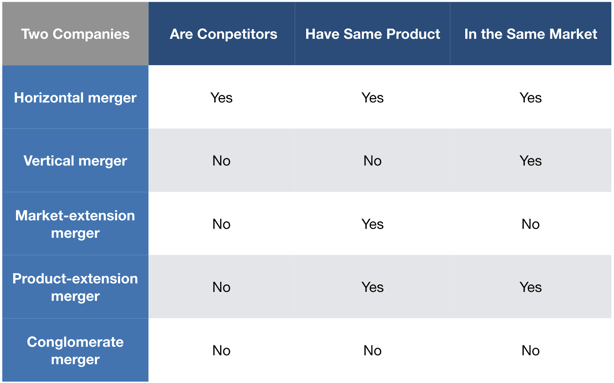
In middle-market mergers and acquisitions, valuation is at the heart of every transaction. Yet for many business owners, how value is determined, and what influences it, is often misunderstood. Most privately held businesses are valued based on a multiple of earnings, commonly EBITDA, adjusted by market expectations of growth and risk. While external factors such as industry trends and capital markets play a role, the most impactful valuation drivers are often company-specific and within the owner’s control.
Understanding these drivers is essential for maximizing outcomes in a sale. Businesses with stable earnings, diversified customer bases, and strong management teams often command premium multiples. Those with concentration risks, compliance issues, or operational gaps may face discounts or more conservative deal structures. The same company can attract very different valuations depending on how well it addresses, or neglects, these key variables.
Versailles Group, Ltd., a Boston-based boutique investment bank, advises middle-market companies on how to prepare for and navigate this complexity. With decades of experience leading sell-side transactions, the firm helps owners understand valuation mechanics and take actionable steps to increase both price and deal certainty.
How Buyers Think About Value
Valuation in M&A is driven by two fundamental components: the company’s financial performance and its risk and growth profile. In simple terms, valuation equals earnings multiplied by a market-derived multiple. While EBITDA is the most common earnings metric, buyers go beyond the latest year’s results. They evaluate the quality, consistency, and trajectory of earnings over time.
Buyers also assess how those earnings are likely to change. They consider market opportunities, scalability, competitive advantages, and risks. These factors inform the multiple factors applied to the financial baseline. A company with strong, recurring earnings and a clear path to growth may receive a much higher multiple than one with inconsistent results or strategic uncertainties.
The key insight is that valuation is not fixed. It reflects a buyer’s expectations and risk tolerance. Two different buyers may view the same company in entirely different ways depending on how they perceive its earnings quality, leadership depth, and future potential.
Financial Factors That Increase Valuation
1. Strong, Consistent Earnings and Revenue Quality
Steady or growing revenues and EBITDA over multiple years typically support higher valuations. Buyers look for signs of momentum, market demand, and operational effectiveness. Companies that demonstrate improving margins, consistent growth, and limited volatility build confidence in their future performance.
Revenue quality is equally important. Businesses with recurring or contracted revenue streams are more attractive than those dependent on one-time sales. Low customer churn, diversified revenue streams, and a history of meeting forecasts suggest earnings are sustainable. Clean, well-documented financials, supported by clear accounting practices, also reduce risk and improve diligence outcomes.
2. Attractive Margin Profile and Cash Generation
Margin levels and cash conversion rates are key valuation drivers. Companies that convert a high percentage of revenue into EBITDA and cash flow are generally perceived as less risky. Above-average margins signal pricing power, cost control, and operational efficiency.
Scalable operations, disciplined expense management, and standardized processes tend to deliver better financial performance. These qualities not only drive profitability but also signal readiness for integration or further expansion, thereby increasing buyer interest and valuation.
3. Growth Prospects and Market Position
Buyers pay a premium for businesses with credible growth opportunities. This could involve expansion into new geographic markets, product launches, or cross-selling opportunities across business lines. A clear growth strategy supported by data and execution history increases buyer confidence.
A defensible market position further enhances valuation. Niche leadership, proprietary technology, well-recognized brands, or differentiated capabilities create barriers to entry and customer loyalty. Companies that hold a unique or hard-to-replicate advantage are seen as more valuable and less vulnerable to competition.
Business Qualities That Increase Valuation
1. Diversified and Sticky Customer Base
A broad customer base with limited concentration is one of the most important risk mitigators in an M&A transaction. Buyers and lenders alike are wary of businesses that depend heavily on one or two customers. In these cases, the loss of a single relationship could materially affect revenue and cash flow.
Conversely, companies with a diversified and loyal customer base, particularly those under long-term contracts, are perceived as more stable. Recurring revenue models, such as subscriptions or service agreements, enhance stability and tend to justify higher multiples.
2. Strong Management Team and Low Owner Dependence
Buyers place a significant premium on companies that can operate without the current owner. A capable, experienced management team ensures continuity and reduces integration risk. This is especially important for private equity buyers, who typically want to back existing leadership teams rather than replace them.
Businesses where the owner drives sales, manages operations, and holds key customer relationships are viewed as higher risk. Reducing this dependence well before going to market increases perceived value and expands the pool of interested buyers.
3. Robust Systems, Processes, and Governance
Institutionalized businesses are easier to evaluate, integrate, and scale. Companies that have documented processes, standardized systems, and clear reporting structures signal operational maturity. Buyers view these elements as signs that the business is well-run and ready for further investment or integration.
Up-to-date contracts, defined compliance procedures, and formalized governance reduce diligence risk and streamline the path to closing. The more professional and organized the business appears, the more confident buyers will be in its performance, and the smoother the sale process will be.
Risk Factors That Depress Valuation
1. Concentration Risks
Whether related to customers, suppliers, or products, concentration introduces fragility into the business model. Buyers and lenders may reduce valuation multiples or insist on protective deal terms, such as earn-outs or performance milestones, when a large percentage of revenue comes from a small number of sources.
For instance, a company where one customer represents 40 percent of sales will face greater scrutiny than one where no customer exceeds 10 percent. Similarly, heavy reliance on a single supplier or key product can create operational vulnerabilities that affect pricing.
2. Unstable or Declining Financial Performance
Volatility in revenue or profitability signals potential weakness. Buyers are cautious when a company shows inconsistent earnings, shrinking margins, or unexplained performance swings. During due diligence, unexpected fluctuations in EBITDA may be interpreted as signs of weak controls or unsustainable business practices.
Even if recent results are strong, a history of erratic performance can create skepticism. Buyers seek patterns and predictability. A clean growth story is easier to underwrite and finance, and it tends to support more favorable terms.
3. Legal, Regulatory, and Compliance Issues
Pending litigation, regulatory violations, IP disputes, or unresolved employment matters can derail a deal or reduce valuation. These issues create uncertainty, increase legal costs, and may require post-closing protections such as escrows or indemnification.
Buyers often respond to perceived legal risks by reducing the offer price or requesting more conservative structures. In some cases, unresolved liabilities can delay or terminate deals. Early identification and resolution of such risks is critical.
4. Operational Gaps and Capital Expenditure Requirements
Outdated equipment, aging infrastructure, weak IT systems, or inefficient operations translate directly into post-closing investment needs. If a buyer must plan for significant upgrades or restructuring, they may adjust their purchase price accordingly.
Buyers also consider how integration-ready the company is. Businesses that require extensive transformation post-acquisition are less attractive and often receive lower offers. Preparing the business for scale, both operationally and technologically, can reduce this discount.
Market and Process Factors That Influence Valuation
1. Industry Conditions and Capital Markets
Broader economic and market conditions influence M&A valuations. Sector growth, cyclical factors, interest rates, and debt availability all influence what buyers are willing to pay. High-growth industries typically see higher multiples, while cyclical or declining sectors may experience downward pressure.
Although business owners cannot control macro conditions, they can be strategic about timing. Selling into a strong market with favorable industry dynamics and healthy capital flows can significantly improve valuation outcomes.
2. Deal Structure, Competition, and Negotiation
The structure of a transaction matters. Offers with full cash at closing are typically valued higher than those with contingent payments such as earn-outs or seller notes. However, some structures may offer higher total proceeds if future performance targets are met.
Running a disciplined, competitive sales process also makes a difference. When multiple qualified buyers are at the table, the seller gains leverage to negotiate both a better price and more favorable terms. Competitive tension can lead to offers above initial expectations and provide flexibility in deal structuring.
How Owners Can Proactively Improve Valuation
Owners who are two to five years from a potential sale can take meaningful steps to increase valuation. A value-creation plan that focuses on diversifying revenue, improving margins, upgrading systems, and strengthening management lays the foundation for stronger outcomes.
A pre-sale valuation and readiness assessment helps identify key value drivers and risk factors early. With that insight, owners can prioritize changes that will have the greatest impact on buyer perception and pricing. Even modest improvements in customer concentration, documentation, or reporting can reduce red flags and improve marketability.
Where Versailles Group Adds Value
Versailles Group works with business owners to assess valuation potential, understand what drives price, and prepare the company for a competitive sale. The firm’s advisors provide objective guidance on how buyers assess value and which actions meaningfully influence multiples.
Through confidential, well-structured sale processes, Versailles Group brings qualified buyers to the table and manages negotiations across both price and structure. The firm’s experience in earn-outs, working capital adjustments, escrow terms, and seller protections ensures that total economics, not just headline numbers, are optimized.
How Versailles Group Helps Owners Avoid Costly Mistakes
In addition to maximizing value, Versailles Group helps clients avoid common missteps that reduce outcomes. The firm works with owners to evaluate sale readiness, identify operational, financial, and legal issues, and organize data for diligence. Early preparation ensures that the business is positioned credibly and efficiently.
The firm also expands and qualifies the buyer universe to create competition, improve pricing, and accelerate closing timelines. Its senior-level advisors negotiate terms that protect the seller’s interests, from valuation to post-closing obligations.
For business owners planning an exit or evaluating inbound interest, early engagement with Versailles Group provides clarity, reduces risk, and improves long-term outcomes. Scheduling a confidential discussion today can help owners identify their company’s key value drivers, avoid preventable mistakes, and lay the groundwork for a successful transaction.
Written by Don Grava
9 January 2026
Versailles Group, Ltd.
Versailles Group is a 38-year-old boutique investment bank that specializes in international mergers, acquisitions, and divestitures. Versailles Group’s skill, flexibility, and experience have enabled it to successfully close M&A transactions for companies with revenues greater than US$2 million. Versailles Group has closed transactions in all economic environments, literally around the world.
Versailles Group provides clients with both buy-side and sell-side M&A services and has been completing cross-border transactions since its founding in 1987.
More information on Versailles Group, Ltd. can be found at
For additional information, please contact
Founder and President
+617-449-3325











-jpg.jpeg?width=1920&height=1080&name=Thinking%20of%20Selling%20(1)-jpg.jpeg)






